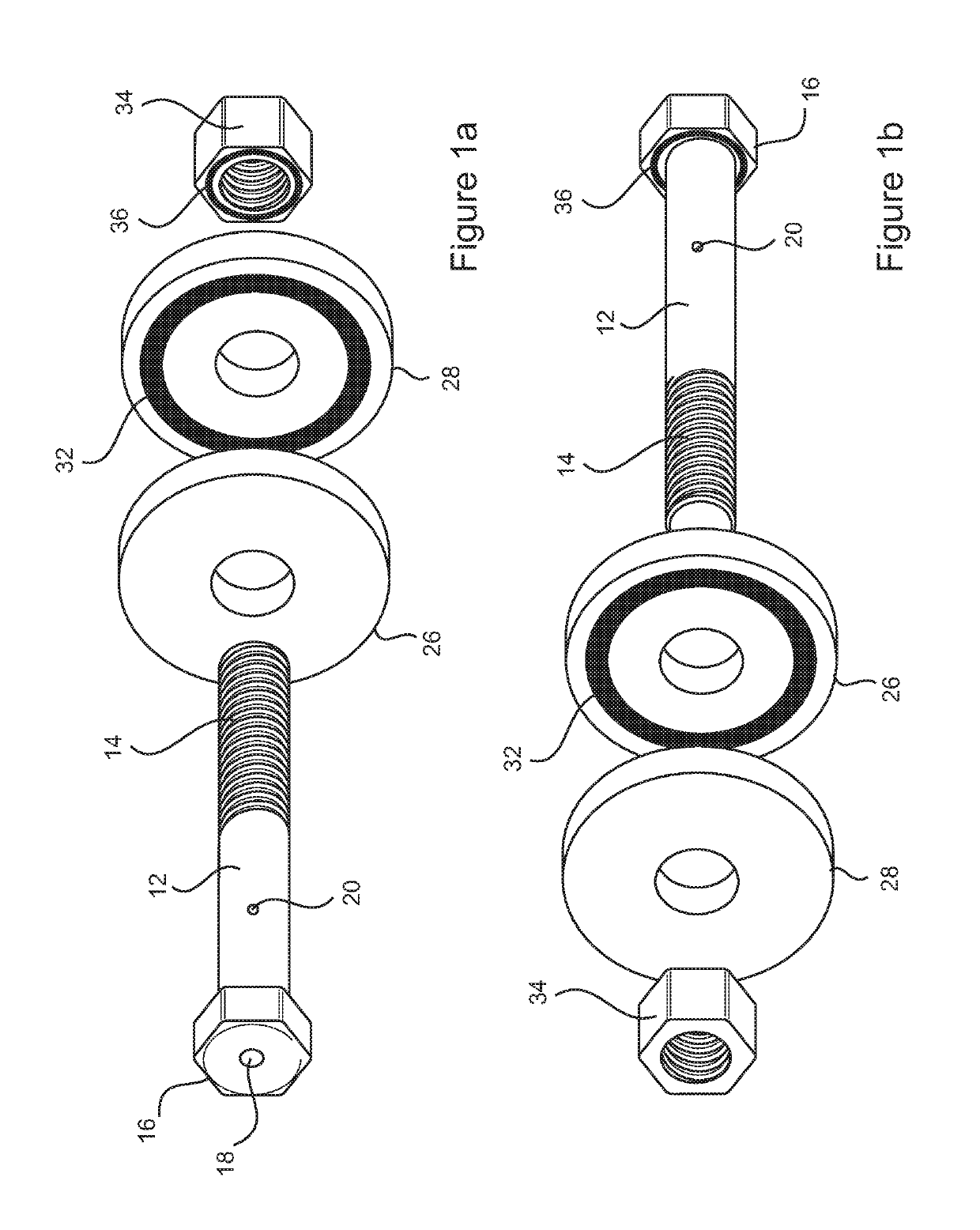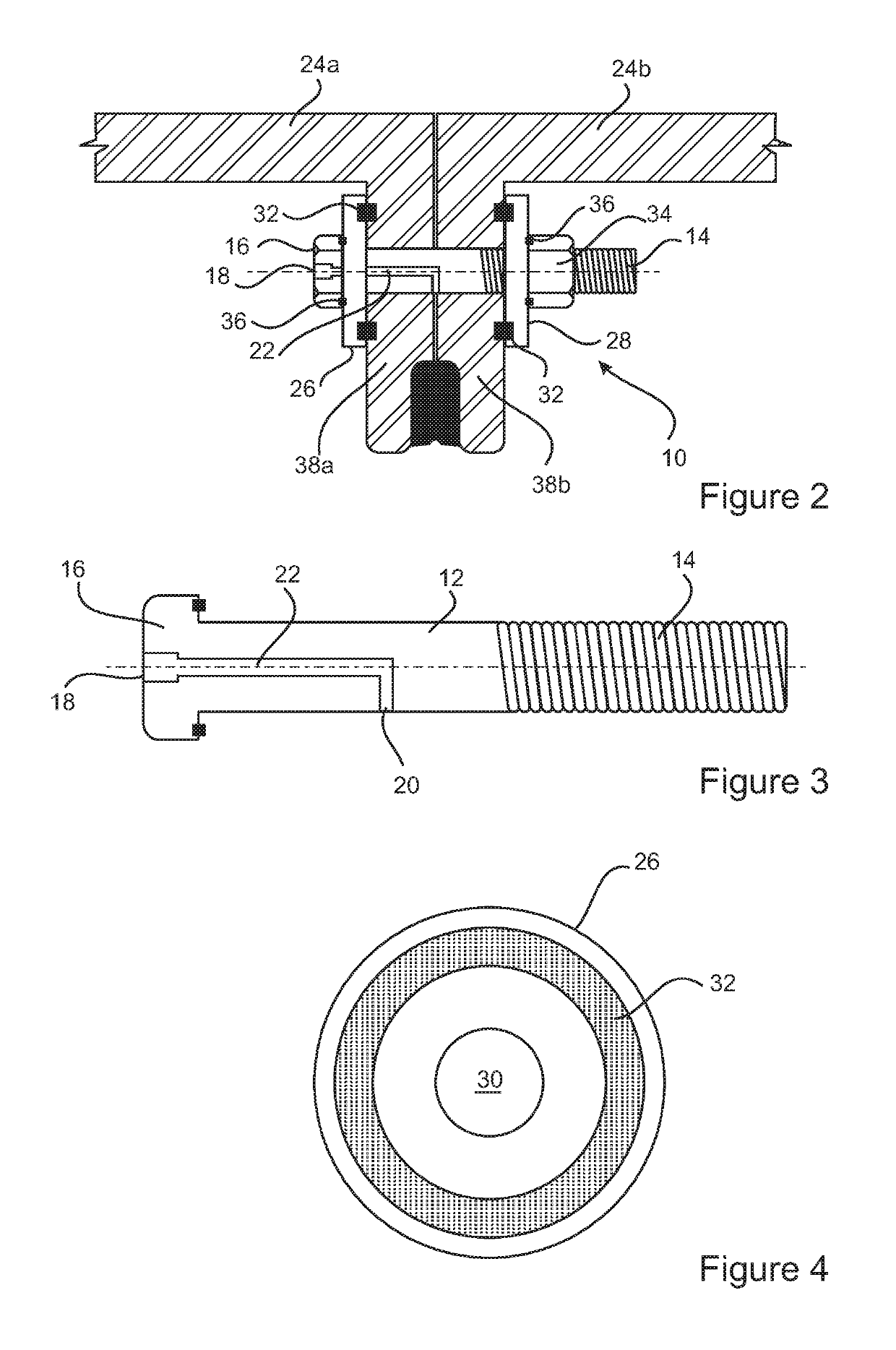Fastener and method of sealing passage
a fastener and sealing passage technology, applied in the field of fasteners, can solve the problems of essentially dry mines, reduced integrity of tunnels or shafts, and leakage that can penetrate into tunnels or space between tubing rings, and achieve the effect of limiting or preventing leakage and being practical and effectiv
- Summary
- Abstract
- Description
- Claims
- Application Information
AI Technical Summary
Benefits of technology
Problems solved by technology
Method used
Image
Examples
Embodiment Construction
[0029]It will now be convenient to describe the present invention with reference to the accompanying drawings. It should be understood that the following description is illustrative of explanatory embodiments of the present invention and should not be taken as limiting the scope of the invention to any one embodiment. Further, the Figures depicted in this specification have been included for illustrative purposes only and are not intended to be limiting. It will be understood by the relevant skilled addressee that the embodiments described are typical and illustrative only and can be varied without departing from the scope of the invention.
[0030]Referring initially to FIGS. 1a and 1b, there is shown a fastener 10 for typical use in fastening together two components. In the embodiment described, the fastener 10 is described in the context of the application of fastening adjacent tubbing segments, 24a and 24b or tubbing rings used in construction of excavated tunnels and shafts. Howev...
PUM
 Login to View More
Login to View More Abstract
Description
Claims
Application Information
 Login to View More
Login to View More - R&D
- Intellectual Property
- Life Sciences
- Materials
- Tech Scout
- Unparalleled Data Quality
- Higher Quality Content
- 60% Fewer Hallucinations
Browse by: Latest US Patents, China's latest patents, Technical Efficacy Thesaurus, Application Domain, Technology Topic, Popular Technical Reports.
© 2025 PatSnap. All rights reserved.Legal|Privacy policy|Modern Slavery Act Transparency Statement|Sitemap|About US| Contact US: help@patsnap.com


